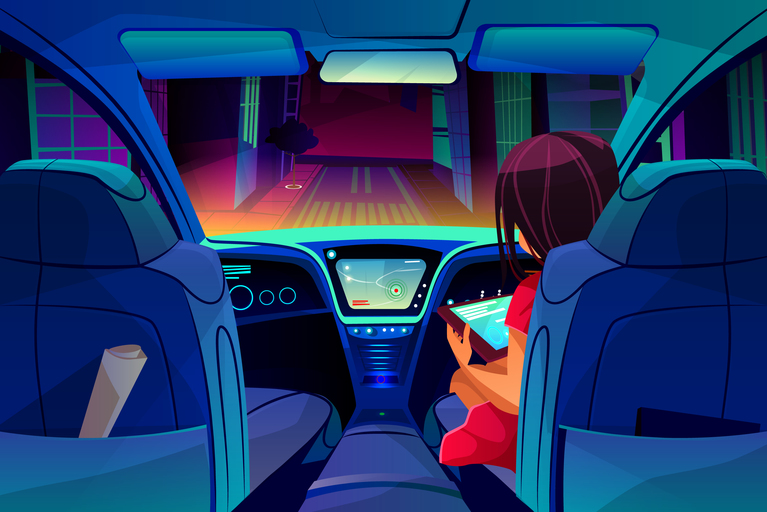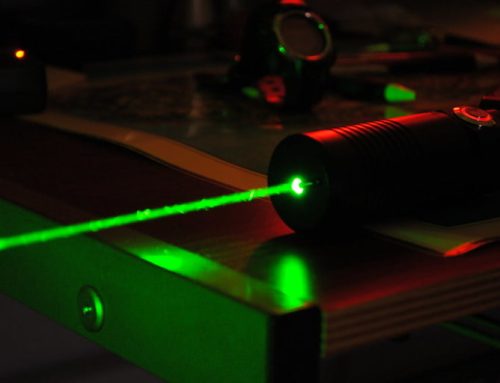
Technology has taken place in every area, whether it is making coffee or exploring space. Today at your fingertip you can control every smart gadget of your home including your doorbell. Most of them are using online cab services. By using the cab service app you can book your cab for transportation. In these cab services, you might need to inform the car driver of your exact destination point. But, what about a car that does not have a driver! You may ask then who will drive it. Here technology spread its wings to handle this situation. Today we are going to understand about Self Driving cars or Driverless cars. So, let’s begin the journey.
What is a Driverless Car?
A Driverless car is a vehicle that is capable of sensing the nearby environment and can operate without human interference. In a self-driving car system, the human passenger is not required to take control of the vehicle at any time. This automated car can go everywhere in a similar way to a conventional car and do everything that an experienced human driver does.
Based on the automation system of cars we can classify driverless cars into the below categories:
No automation:
As per its name, there is no automation in the car driving system. Inside these cars, control systems are manual or human-controlled. Inside passenger performs all driving tasks like steering, acceleration, braking, nearby environment, etc.
Driver assistance:
This vehicle features a single automated system. While driving on an open road for a long time, it would be pretty tiring to keep pressing the accelerator pedal. Cruise control is a feature that helps to reduce such fatigue of the driver. Here this control system uses an actuator to control the throttle and helps your car continue cruising at a consistent speed. In older cars, the cruise system was connected to the accelerator through a cable to maintain the hydraulic pedal in a certain position to keep the speed constant. In modern cars, speed is being controlled electronically through a program without any cable. This newer technology can automatically adjust the speed based on how fast the vehicle ahead is going while maintaining a safe distance.
Partial automation:
A partial automation system is also known as the Advanced Driver Assistance System (ADAS). By using this system a vehicle can control both steering and accelerating/decelerating. Here the automation falls short of self-driving because the driver can control the car at any time.
Conditional automation:
There is a higher automation level inside this system as compared to Partial automation. By using this system cars can control a significant number of operations. Here drivers still monitor all tasks and can take control at any time. This automation system has Environmental Detection capabilities and can make informed decisions for them, such as accelerating past a slow-moving vehicle.
High automation:
The high automation system of the car is advanced than conditional automation. In this automation system, vehicles can intervene if things go wrong or there is a system failure. In simple words, these cars do not require human interaction in most circumstances. Here, the human being has the power to take over the control in this automation.
Complete automation:
Vehicles under this category are completely automated and do not require human attention. Complete automation system would not even have steering wheels or acceleration/deceleration pedals. These cars will be free from geo-fencing, able to move anywhere and do any task that an experienced driver can do.

self driving car by google
Inside Driverless Vehicle:
When speaking of driverless cars, we have differentiated between various levels of automation. To achieve automation in a vehicle several sensors and actuators are being used. Sensors and actuators are two of the main stars of self-driving cars. Several sensors capture information from surroundings. LIDAR is one of the best sensors that detect the nearby environment of cars. In the same way, driver assistance systems on self-driving cars provide complete autonomy to vehicles.
Driving assistance systems are based mainly on sensors and actuators that allow for the performance of driving assistance actions. The main objective of the driving assistance system is to improve the safety of vehicle occupants as well as that of their surroundings. In self-driving cars below systems are generally present:
Light assist:
This assistance system is mainly responsible to control the intensity of front light beam of the vehicle. An automatic light control system increases the driving time with better light control. In this system, sensors are installed in the front of the vehicle that identifies the presence of nearby objects like vehicles and send a signal to automatically switch to low light beam, for preventing glare.
Front assist:
This assist system helps to prevent collisions with vehicles driving in the same direction. The attached sensors in this system monitor the traffic ahead of the driverless car and, in case it detects a possible collision, it will send and warning alert with an acoustic signal and a visual popup on the dashboard of the driving seat. If the driver does not accept the vehicle warnings, it breaks shortly as a warning. And if the driver is still unresponsive, the car brakes with the required intensity to prevent any kind of damages.
Geo-fence assists:
Geo-fence assist is a kind of lane assist system. It recognizes the markings on the lane or road so that if the vehicle crosses the markings, the assist system steers the steering itself to take the correct path. At the same time system checks the position of the driver’s hands on steering and it generates a sound and visual warning so that the driver takes the car’s control once again.
Emergency control:
As per its name, it is an assist system for emergencies. This control system is an upgraded version of the Geo-fence assist. An emergency control system will even be capable of fully stopping the automated vehicle in case the driver moves his/her hands away from the steering for a short or long time. By doing this, the system will understand that the driver has suffered from some type of consciousness. In his case, the emergency control system will emit acoustic and visual warnings, and subsequently, in case there is no reaction, it will perform a few short brakes to warn the driver. If the driver is still not responding then the car will slow down until it comes to a complete stop.
Advantages And Limitations or Driverless Cars:
As of now, most of the self Driverless cars are still in the testing phase. Driverless cars or self-driving cars have several advantages as well as limitations.
Some of the advantages are given below:
- By using the driverless car system we can decrease the number of accidents and save many lives. A human being may distract while driving the car but a self-driving car or driverless car leaves no opportunity for distraction.
- Driverless cars may significantly reduce congestion and improve traffic by increasing up road capacity by using distance management on road.
- A self-driving car drops off you at your destination and directly moves to a vacant parking spot. This eliminates time and power wastage.
With several merits autonomous car has some limitations also:
- These cars are equipped with high-end technology, and due to this, they become costly.
- Despite advanced controlling systems, it has security issues. Though it has been successfully programmed to perform specific tasks, there will still be a possible technical glitch that may happen.
- It has a computerized system that may be hacked by any infiltrator.
- Self-driving cars will reduce or eliminate several jobs like driving, traffic control, etc.
Thanks for reading. See you soon with another exploration!






[…] of your brain to help you find your way? It seems foolish but you may be surprised to know that self-driving cars are working in the same way. It uses neat 3D map-making technology which is known as LIDAR. Oh… […]